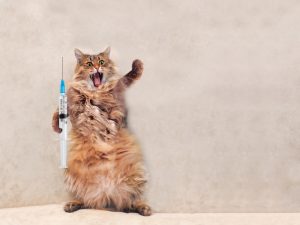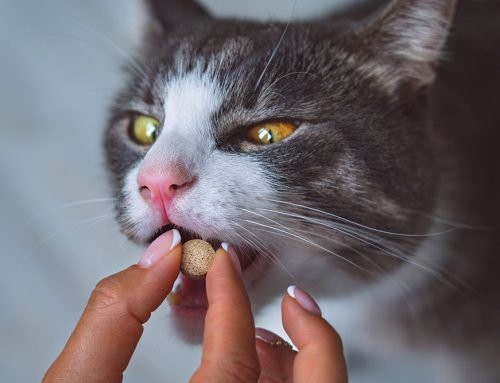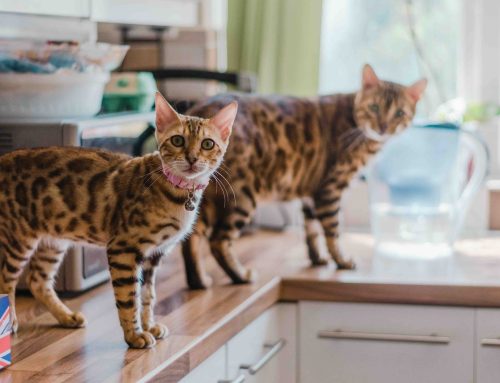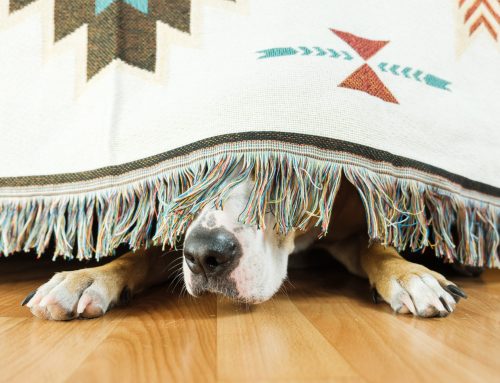Cats aren’t always cooperative about taking oral medications, so treating your arthritic feline friend can be difficult. Our Alisos Animal Hospital team wants to help you treat your pet like a hero, and we provide information about Solensia, a new feline osteoarthritis (OA) therapy.
Feline osteoarthritis
OA causes degeneration of the cartilage that normally cushions the joint, resulting in inflammation, pain, ongoing damage, and secondary changes in and around the joint. Approximately 40% of cats experience OA pain, and clinical studies have shown that 60% of cats older than age 6 and 90% of cats older than age 12 have radiographic evidence of OA. While the condition is more common in older cats, cases have been documented in cats as young as 2 years. OA most commonly affects the hip, stifle, tarsus, and elbow. Factors that also increase a cat’s OA risk include:
- Genetics — Certain breeds are at increased risk for orthopedic conditions, which increases their OA risk. Examples include:
- Main Coons, Persians, and Siamese cats are at increased risk for hip dysplasia.
- Abyssinians and Devon Rex cats are predisposed to patellar luxation.
- Scottish Folds are often affected by a cartilage abnormality that leads to severe arthritis in multiple joints.
- Injury — Fractures, dislocations, and other injuries in and around the joint can cause OA.
- Obesity — Obese and overweight cats are at increased OA risk, because the excess weight strains their joints.
- Acromegaly — This rare condition in older cats causes the pituitary gland to secrete too much growth hormone, which can lead to secondary arthritis.
Feline osteoarthritis effects
OA causes chronic, maladaptive pain. While acute, adaptive pain is beneficial and helps to avoid potentially harmful behaviors, chronic pain is significantly debilitating. When the pain signal always exists, the cat’s nervous system is bombarded, severely impacting their quality of life (QOL). Consequences include:
- Cognitive effects — Constant pain signaling can lead to cognitive decline from unrelenting stress.
- Musculoskeletal degeneration — Joint pain and malfunction lead to decreased mobility, which can cause musculoskeletal degeneration and further inhibit mobility.
- Central windup — Constant pain signaling makes pain harder to control, because the central nervous system is changed and becomes more sensitive to pain signals.
- Human animal bond — Chronic pain affects the cat’s mood, making them less willing to interact.
Feline osteoarthritis signs
In the wild, cats who exhibit pain are targets for predators. While your feline friend is at no risk of becoming another animal’s meal, they retain the instinct to hide pain, which can make OA detection difficult. Signs you may notice include:
- Sleeping or resting more
- More time spent hiding
- Inappropriate elimination, because they have difficulty getting in and out of the litter box
- Hesitating before jumping up or down
- Resting in more easily accessible areas (e.g., on the couch rather than the top of the refrigerator)
- Bunny hopping up stairs or taking stairs one at a time
- Inadequate grooming
- Irritability toward people and other household pets
- Playing less
Feline osteoarthritis diagnosis
Cats often don’t act normally at the veterinary office, so your at-home observations are extremely helpful when diagnosing OA. When possible, video your cat when they move unusually, so our team can see their behavior. Other possible diagnostics we may use include:
- Physical examination — We examine your cat from nose to tail, checking for joint swelling, crepitus, or pain, as well as other abnormalities.
- X-rays — We may recommend X-rays to determine how severely the joint is affected.
- Blood work — Since feline OA causes signs that may indicate other health issues, we may want to rule those out by performing a complete blood count and biochemistry profile.
Feline osteoarthritis treatment
In the past, feline OA treatment was limited, because non-steroidal anti-inflammatories (NSAIDs) that can help are available, but not Federal Drug Administration (FDA) approved for safe, long-term use in cats. Another popularly used drug, gabapentin, doesn’t target the specific pain receptors associated with OA. In addition, cats are notoriously difficult about taking oral medication, so OA treatment mainstays were weight management and environmental modification to improve the cat’s mobility. Also, joint supplements that are often prescribed to help slow joint degeneration don’t address immediate OA pain.
The good news is that in January, the FDA approved Solensia, a biologic for feline OA that is safe for long-term use.
Frequently asked questions about Solensia for cats
What is Solensia? — The active ingredient in Solensia is frunevetmab, the first and only FDA-approved monoclonal antibody treatment for feline OA pain.
How does Solensia work? — Solensia targets Nerve Growth Factor (NGF), which is an important pain driver in feline OA.
How effective is Solensia? — In a three-month study, 77% of cat owners reported pain improvement in their cat when treated monthly with Solensia.
Is Solensia safe for my cat? — Yes. Solensia is an antibody (i.e., a type of protein) and is eliminated like naturally occurring body proteins, which requires minimal liver or kidney involvement. However, Solensia shouldn’t be used in pregnant, breeding, or lactating cats.
What are Solensia’s side effects? — The most common side effects reported in a clinical study were vomiting and injection site pain.

How long does Solensia take to work? — Some cat owners reported improvements in their cat’s mobility as early as 14 days after starting Solensia.
How is Solensia administered? — Solensia is administered by subcutaneous injection in our clinic once a month. We will administer treatment and assess your cat’s OA pain and mobility every four weeks.
If you would like your cat assessed for OA, or you think your feline friend can benefit from Solensia, contact our Alisos Animal Hospital team to schedule an appointment.








Leave A Comment